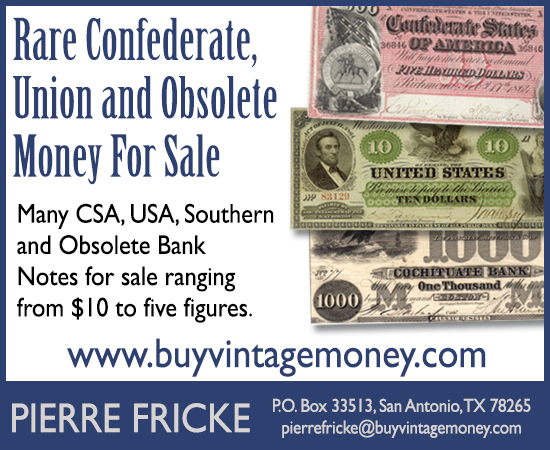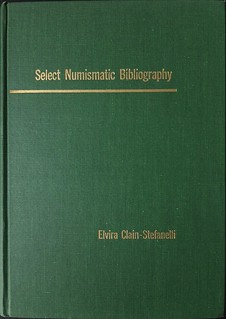
PREV ARTICLE
NEXT ARTICLE
FULL ISSUE
PREV FULL ISSUE
BOOK REVIEW: SELECT NUMISMATIC BIBLIOGRAPHYBill Van Ornum submitted this review of a numismatic literature classic, Elvira Clain-Stefanelli's 1965 Select Numismatic Bibliography, something many bibliophiles and researchers keep handy even today. Thank you! -Editor
We learn about Clain-Stefanelli in David Bowers' book Coins and Collectors, Second Edition. (Atlanta, Ga., 2014) Her life and work are highlighted in the chapter on the Smithsonian Institution. Working as a team with her husband, Dr. Vladimir Clain-Stefanelli, in 1960 they created a display of Lewis E. Eliasberg Sr.'s collection at the Smithsonian. It was a great attraction and over 1.5 million viewers attended. In work as curator, she brought numismatic professionalism to the Smithsonian collection and in 1990 was honored with a Festschrift. Select Numismatic Bibliography offers material on general references and historical periods from around the world. There are sections on paper money, economics, tokens, and decorations. There is even a bibliography of bibliographies! The extensive list of periodicals contains 424 titles, a gold mine for those seeking primary sources. Let's dip into the book. One geographic area covered in the ancient world is Central Greece. Of the seven references, 5 are in German and 2 are in English. One will find most sources written in this book in the vernacular language of a particular country. When working with primary sources like this, they deserve to be read in the original language—nuances can be lost in translation. I am not sure if doctoral programs are as rigorous in requiring reading and writing knowledge of one (or more) languages. (In my own field of clinical psychology, this requirement was dropped by doctoral programs decades ago.) So in the future, Clain-Stefanelli's book will remain important to serious researchers who can understand these native tongues. The book is organized in nine parts:
The second chapter is the longest and most detailed. There are sections on ancient Greek coins, Roman coinage, the Middle Ages, and Modern coinages. Interestingly, there is a chapter about books on economics. Although I had read in one of Dave Bowers' writings that he was an economics major in college, I hadn't thought of studying this important subject as a way to understand numismatics. Topics in this chapter include production of precious metals; monetary theory before Adam Smith; the gold standard, money; prices and policy; the study of prices and money; history of modern banks; the Canadian system; and history of banking in the United States with reference to particular states. As we head into a realm of virtual money, these books will remain important because they cover the system of exchange between people for millennia. This book was published by Stack's in 1965. As I now hold it in my hand, it is a beautiful example of bookbinding. The cover features gold colored writing on a green background—two colors important in understanding money. The bindings are sturdy and the book lies flat on the table. Many of us read books this way so it's much easier to study the book and write or type at the same time. The paper is thick and I suspect it is acid-free. There appears to me to be an important difference between hard lists of references such as this one and popular search engines and scholar.google.com. The popular engines appear to be customized to the earlier searches of the user so these searches might miss things that you are looking for but aren't caught by the search engine's algorithm. I suspect many numismatic references do not appear on scholar.google.com. In our field I think that hard copy reference material and libraries will continue to be important. Another reason this is an important book—it highlights a great woman numismatist. Dr. Stefanelli's book will continue to be a pillar of numismatic research. While spending some time going through the book I learned many things but this was dwarfed by all the material I don't know about and will probably never learn. But isn't this one feature of a great book? 
Wayne Homren, Editor The Numismatic Bibliomania Society is a non-profit organization promoting numismatic literature. See our web site at coinbooks.org. To submit items for publication in The E-Sylum, write to the Editor at this address: whomren@gmail.com To subscribe go to: https://my.binhost.com/lists/listinfo/esylum All Rights Reserved. NBS Home Page Contact the NBS webmaster 
|
